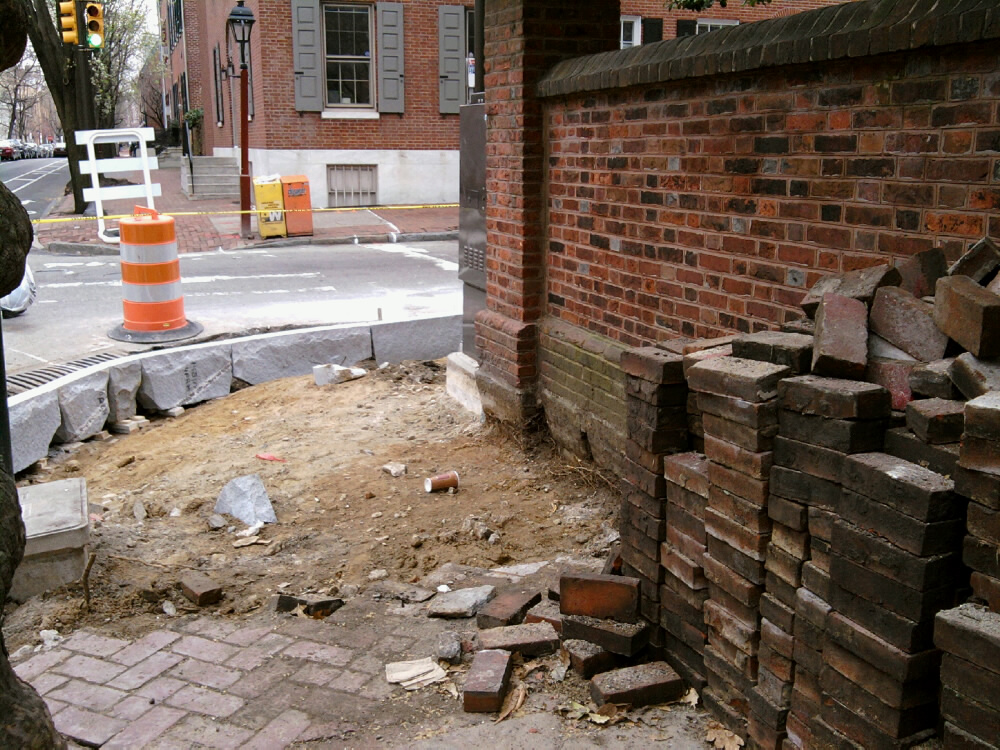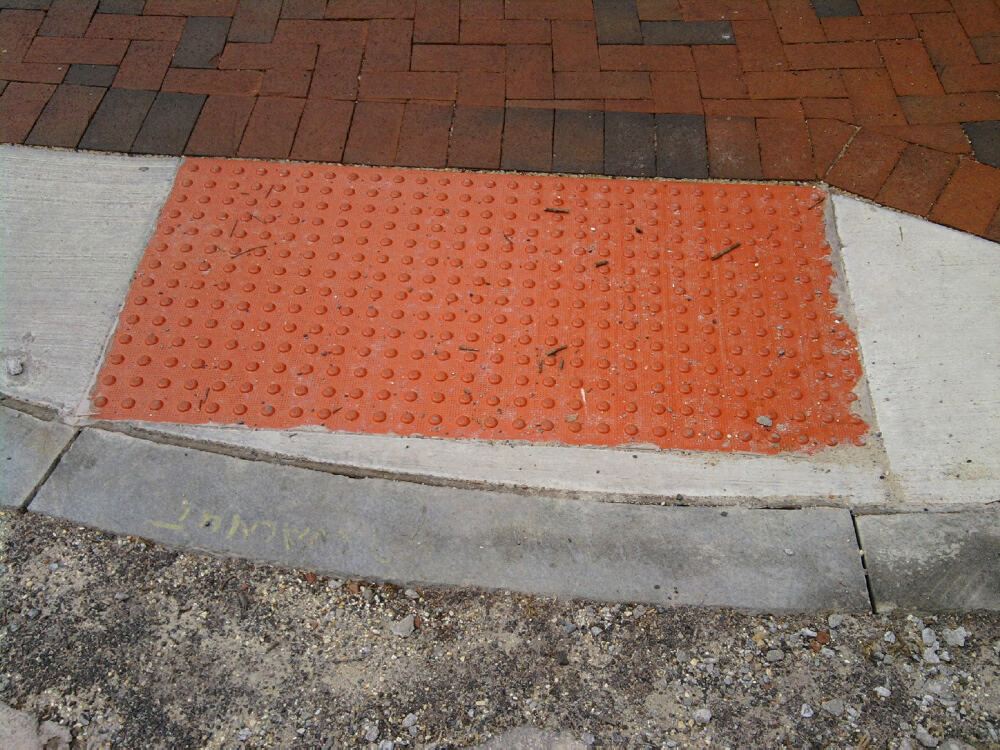Work yet to resume on sidewalk project in Society Hill and beyond; new design means a new contractor agreement
While Society Hill Civic and the city agreed last fall on an ADA-compliant sidewalk ramp design that was sensitive to historic surroundings, work on the project has yet to resume.
The new design calls for more brickwork and less concrete. It is “significantly more labor intensive” than the original design, said Stephen Buckley, assistant managing director for the city’s office of transportation. “We had to add a significant number of new items” to the contract. And that meant C. Abbonizio Contractors Inc had the right to re-negotiate.
Work could begin again in six to eight weeks if on-going negotiations with the company originally hired to do the work, C. Abbonizio Contractors Inc., are successful. If no agreement is reached, however, the project will have to be rebid.
In that case, a new contractor would likely not begin work for more than a year – in spring 2013 – Buckley said.
C. Abbonizio is expected to present their proposed new price at a Friday session, Buckley said.
A little bit of history:
The project, whose original price tag was $7.55 million, includes street resurfacing and sidewalk work across several communities in the South East quadrant of Center City. Some of the money is coming from state and federal sources, including more than $3 million in federal economic stimulus funds.
Because federal funds are being used, the city must make the sidewalks ADA compliant. This meant reconstructing many sidewalk ramps to precise specifications and installing rectangular pads in a contrasting color with special bumps that alert blind people they are about to enter an intersection.
Work began in Society Hill in Spring 2011, and within days, residents became concerned that the design being used did not fit well with the historic neighborhood, and that the cheek walls – curblike structures used to protect building foundations when the new slope of the sidewalk would expose them – were detracting from historic buildings.
At the urging of Society Hill Civic and the Preservation Alliance, the city stopped the work and sought guidance from PennDOT, The Philadelphia Historical Commission, and the Pennsylvania Historical and Museum Commission. PHMC eventually requested a full review, based on the fact that a complete historic review to gauge whether a project will have any negative impact on historic resources that are either on the National Historic Register or are qualified to be is required whenever federal dollars are used to pay for a project or a federal permit is required.
“All parties” agreed it was best not to begin work in other neighborhoods, either, since similar conditions would be faced elsewhere in the project, Buckley said.
The new design calls for more brickwork and less concrete. “The flairs – angled pieces around the ramps – were previously poured concrete. Now they are brick,” said Lorna Katz-Lawson chairwoman of Society Hill Civic’s zoning and historical preservation committees and now the point-person for this issue. “It’s more brick laying, and it’s on an angle.”
The high-strength concrete generally used for such projects is very white, said Katz-Lawson, an architect. “They are tinting that so that it visually sits down a bit. They are making it grayer,” she said.
Buckley said the cheek walls, once slated to all be poured concrete, will match the sidewalk in the area. So in some cases, it will be brick. Work around some historic landmarks where unusual materials come into play won’t be done as part of this project, but bid separately, later.
The changes meant “we had to add a significant number of new items” to the contract, Buckley said. More work meant C. Abbonizio had the right to re-negotiate. The company at first suggested an open-ended contract where the city would pay for time and materials costs as needed. “We weren’t comfortable with that,” Buckley said. “It exposes the city too much” financially.
Buckley said the city would like to proceed with the project as soon as possible, with the original contractor. But his office must also be budget-conscious, and so if agreeable terms can’t be reached with C. Abbonizio, the project will be rebid. The person at C. Abbonizio who could speak about this project was not available Thursday afternoon.
If the project stays with the current contractor, the project should be finished by the end of fall 2012, about a year behind schedule.
All federal stimulus dollars must be spent by Sept. 2013. If a new contractor must be chosen, Buckley said the project may not be totally finished by then, but enough will have been completed to use the stimulus dollars.
The residents and historic advocates involved in the project were satisfied with the agreement reached.
When asked if the project delay was worth it, Buckley said, “It’s worth it to get it done right.”
Buckley said it was “unfortunate” that the project started in “one of the most unique neighborhoods,” but the lessons learned about historic review would serve his department well moving forward. “We believe we have standards and details that ensure it’s done well in other neighborhoods,” he said. And things will go a lot smoother in the future.
Fir historic neighborhoods with brick sidewalks, the Society Hill ramp design is now “the city’s, and likely the state’s standard as well,” Buckley said.
Reach the reporter at kgates@planphilly.com
WHYY is your source for fact-based, in-depth journalism and information. As a nonprofit organization, we rely on financial support from readers like you. Please give today.





